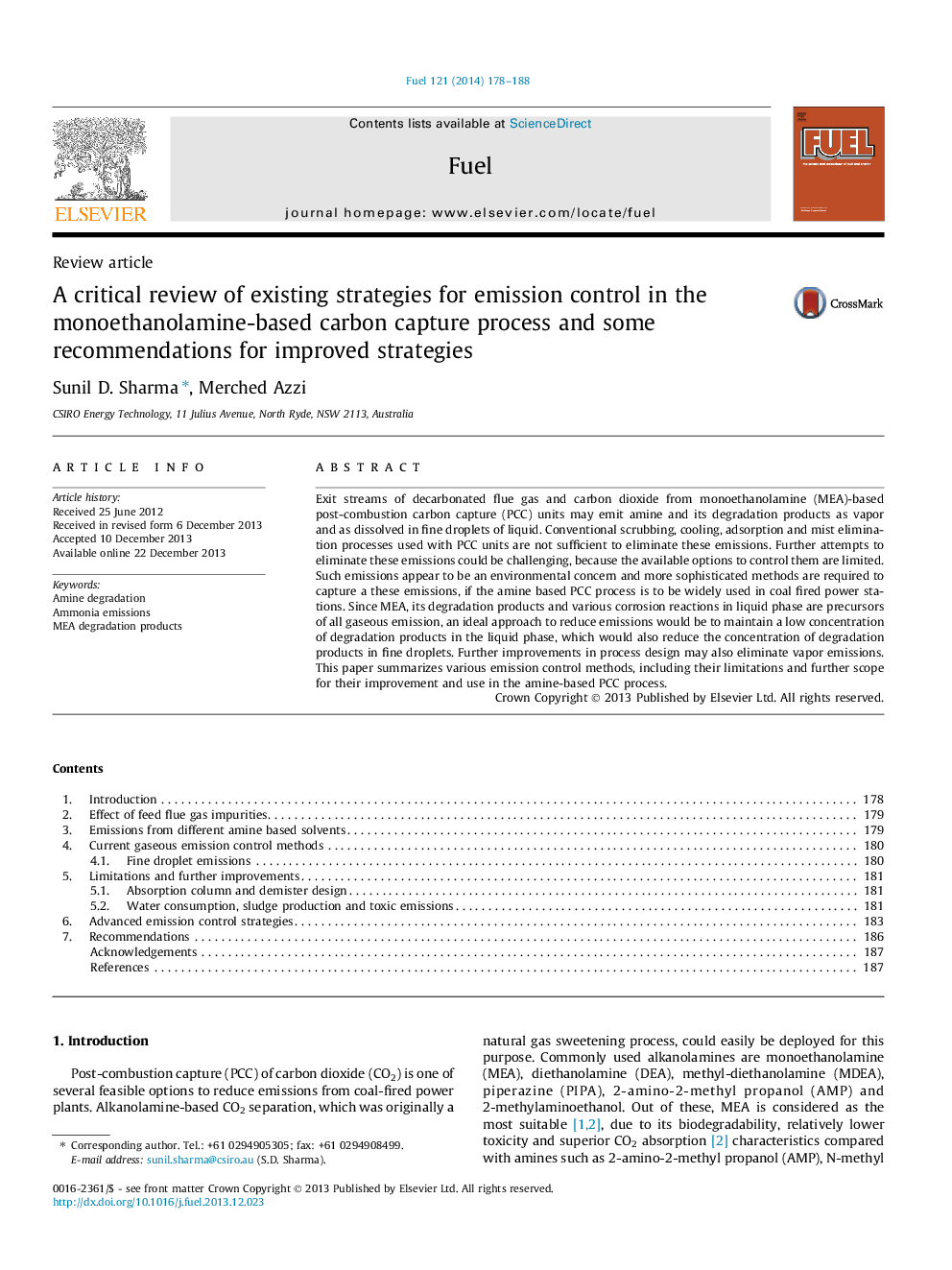| Article ID | Journal | Published Year | Pages | File Type |
|---|---|---|---|---|
| 206228 | Fuel | 2014 | 11 Pages |
Exit streams of decarbonated flue gas and carbon dioxide from monoethanolamine (MEA)-based post-combustion carbon capture (PCC) units may emit amine and its degradation products as vapor and as dissolved in fine droplets of liquid. Conventional scrubbing, cooling, adsorption and mist elimination processes used with PCC units are not sufficient to eliminate these emissions. Further attempts to eliminate these emissions could be challenging, because the available options to control them are limited. Such emissions appear to be an environmental concern and more sophisticated methods are required to capture a these emissions, if the amine based PCC process is to be widely used in coal fired power stations. Since MEA, its degradation products and various corrosion reactions in liquid phase are precursors of all gaseous emission, an ideal approach to reduce emissions would be to maintain a low concentration of degradation products in the liquid phase, which would also reduce the concentration of degradation products in fine droplets. Further improvements in process design may also eliminate vapor emissions. This paper summarizes various emission control methods, including their limitations and further scope for their improvement and use in the amine-based PCC process.
